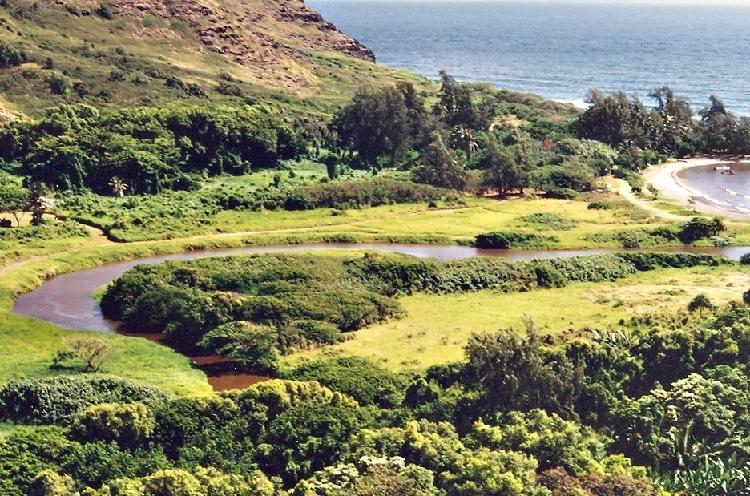Prioritization planning for coastal wetland restoration on Molokaʻi
Moloka‘i has great wetland restoration potential in Hawaiʻi, but most remaining sites are highly degraded. The future of several endangered waterbirds and insects relies on restoring coastal wetland habitat that is resilient to sea-level rise and coastal flooding. Currently, managers lack background data on Molokaʻi to prioritize sites for restoration. In this project, researchers will develop a comprehensive dataset and create a prioritization plan for coastal wetland restoration. The team will work closely with project partners and stakeholders to develop a well-vetted plan to support endangered species and meet community needs.
Existing maps and spatial data about the Molokaʻi landscape will be compiled in a geographical information system. Potential sites identified by partners will be assessed for water sources, soil type(s), elevation, vegetation, ownership, social-cultural value, and practical/legal barriers to restoration. GIS data will be compared to projections for sea-level rise and wave-induced flooding to estimate future site sustainability, and sites deemed most resilient to flooding, with potentially high habitat value, will be investigated in the field. Fieldwork will include rapid assessment of soils, vegetation, and hydrology, suitability for waterbirds, and prospects for enhancing natural processes such as carbon storage, sediment trapping, and storm abatement.

Field and GIS data will be combined with future flooding projections to create a map-based resilience and restoration tool, which will be used to help determine which sites are most likely to be sustainable and provide high quality habitat. Such sites will then be prioritized based on practical considerations, community input, land ownership, and indigenous uses. The best sites will be included in a prioritization plan for wetland restoration, which will be vetted by the Molokaʻi community. Stakeholders will be trained in using the tool, together with site specific data, to create wetland restoration plans for other areas across the state and Pacific Region.
PROJECT DETAILS
FUNDED:
FY2021
PI:
Judith Drexler
Research Hydrologist, USGS California Water Science Center
Co-Is:
James Jacobi
Biologist, USGS Pacific Island Ecosystems Research Center
Curt Storlazzi
Research Geologist, USGS Pacific Coastal and Marine Science Center
Collaborators:
Butch Haase
Moloka’i Land Trust
Bret Wolfe
US Fish and Wildlife Service
Dan Polhemus
US Fish and Wildlife Service
Hannah Nevins
American Bird Conservancy
Fern Duvall
Division of Forestry and Wildlife Maui
Stephanie Franklin
Division of Forestry and Wildlife Maui
Arleone Dibben-Young
Nene O Moloka‘i
Nancy McPherson
Department of Hawaiian Home Lands
Pūlama Lima
Ka Ipu Makani Cultural Heritage Center
Helen Raine
Pacific Birds Habitat Joint Venture

